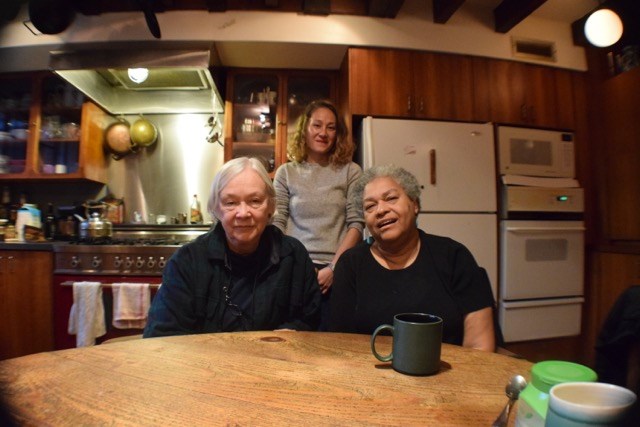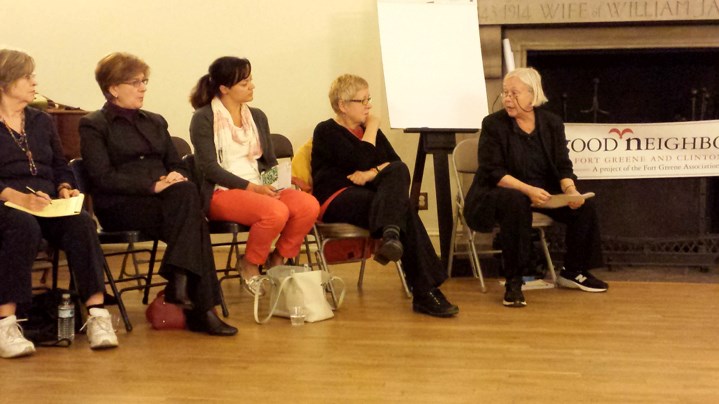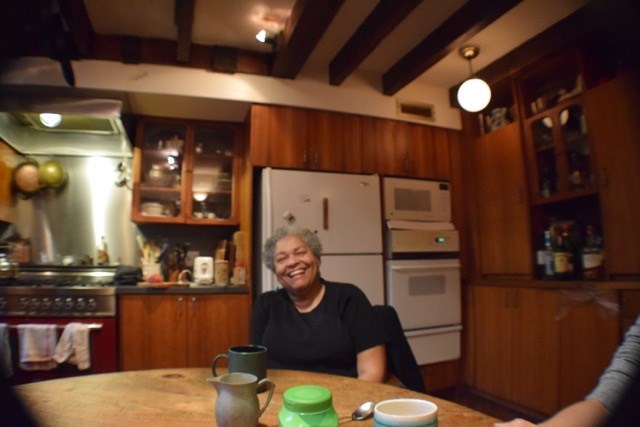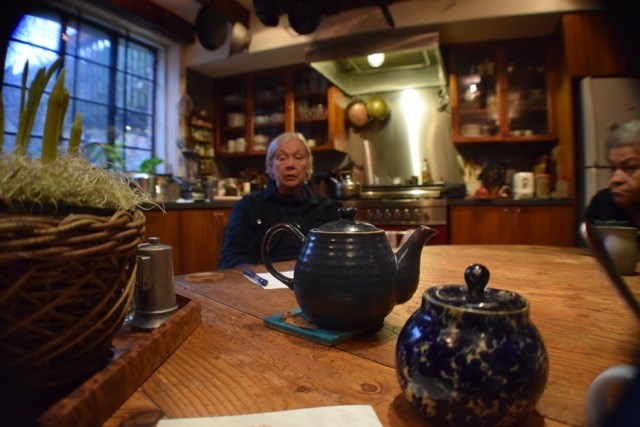
"There used to be a time when there was always someone at home whose identity was caregiver. That doesn't exist anymore," said Beverly Emmons of Fort Greene. "The caregiver is out there earning money to support a family. And now there's nobody at home to give care."
Emmons, 71, is referring to care for the elderly-- the silent, often forgotten needs of the elderly.
Five years ago, Emmons began holding meetings with some of her neighbors around developing a one-stop, trusted resource of referrals and information that would provide a little hand-up for the aging population of Fort Greene/Clinton Hill.
Eventually, she connected with the Village-to-Village network, a capacity building organization that helped Emmons and her group start "The Good Neighbor Project," or what she affectionately refers to as "The Geezer Project."
The Good Neighbor Project is a non-profit, membership-based organization with the goal of helping the aging population of Fort Greene/Clinton Hill remain independent enough to stay in their own homes without the fear of being pushed out because of financial or social dependency.
"It's to keep seniors in the loop," said Emmons, who is retired but still works occasionally as a theatrical lighting designer. "After retirement, many seniors still have a lot of energy and value to the community. But we haven't figured out how to harness it economically speaking. We have to figure out how to do that.
"It's a wild west out there. And seniors need to make sense out of it all."
Membership is open to residents age 50 and over who live in Fort Greene, Clinton Hill and adjacent neighborhoods. Annual dues are calculated on a sliding scale based on income. The goal is to provide information, resources and volunteer help so that members can remain self-sufficient, with or without government or foundation support.

So far, there are 20 members and 350 intergenerational volunteers-- many of them, young "Millennials"-- thanks to Emmons who spent the last two summers sitting outside of the Fort Greene farmer's market handing out flyers and recruiting volunteers. Emmons said, although they now have a ton of eager volunteers ready, the challenge now is getting the word out to the seniors. There's one number they can call, 718-408-2510, and someone will be available to answer and send out a volunteer.
"Not only is this a great way to learn about what your own parents or grandparents' needs might be down the line, but I think there's a lot of value in the social connections that can be made inter-generationally," said 31-year-old Shelby Ahern, who's been volunteering for the program regularly for the past two months.
Ahern moved to Clinton Hill a year and a half ago and said she felt disconnected from her neighbors. She was looking for a way to engage in her new community in a meaningful way. She meet Emmons at the farmer's market:
"When I saw this organization about being a good neighbor that had a strong mission rooted within the good of the community at large, that really resonated for me."
Ahern signed up and now helps field calls for Good Neighbors Project, helps with the organization and paperwork and is available to go out on cold calls.
Patricia DuBose, 69, has lived between Clinton Hill and Fort Greene since 1974. For 28 years, she worked as a prosecutor in Brooklyn. Now she is retired, but still lively, active, and sits on the board of directors of Good Neighbors Project. "We're problem-solvers," said DuBose. She goes on to tell the story of how, when she became a new grandmother and traveled to Arizona to visit the baby, she had no one to water her plants. So by the time she returned, all of her lovely plants she had been caring for over the years were dead.
"We're problem-solvers," said DuBose. She goes on to tell the story of how, when she became a new grandmother and traveled to Arizona to visit the baby, she had no one to water her plants. So by the time she returned, all of her lovely plants she had been caring for over the years were dead.
"Nobody wants to water your plants. But we have volunteers you can actually call and ask, 'Can you do this for me?' People get viruses and may need someone to go buy them the Jell-O, simple things. Or maybe you'd like to meet up with a group to go slow-walking, or you need help getting online to fill out papers and applications," said DuBose. "Even I, as an attorney, am having trouble negotiating with insurance companies and figuring out medicare."
A fancy word for it is "concierge service," said Emmons: "All they need to do is have one number on their refrigerator to call us and say, I need somebody to walk my dog; or There's been a blizzard, and I need someone to help me dig out the snow from my house." Or All of my life is packed in my closets, and I can't lift those boxes. Can someone help me get those boxes out so I can just go through them?"
"They say you should not go to a hospital alone. And a senior should never have to turn up alone. The hospital needs to know that there is someone there who is accountable for that patient and that can keep them to task with their medication or braces or whatever. They can call the number if they need someone to chaperone them."
"There's so much social capital within our own neighborhoods that we just need to tap into," said Ahern. "So it's the asking of volunteers and the asking of seniors to present their needs so that we can actually match our services with their needs."
"Yeah, if you're helpless at home, and you're worried, Oh, I need something, but I can't ask my friend. Yesterday she got me groceries, but now I need to go to the drug store; I can't ask her again," said Emmons. "We're trying to get people used to the idea that they don't have to worry about using up their friends, because they can call us!"
DuBose added, "It's important that they become a member, because when people pay to be a member of an organization, they feel better about calling up and asking for help."
Good Neighbors is the first of its kind in Brooklyn. But already, community board members in Park Slope, Prospect Heights and other neighborhoods are reaching out to Emmons about getting a Village-to-Village network started in their community. Emmons said she has been happy to oblige. But most important to her right now is getting the many seniors living their lives in the shadows to become members, take the first steps in reclaiming their independence.
Emmons said she has been happy to oblige. But most important to her right now is getting the many seniors living their lives in the shadows to become members, take the first steps in reclaiming their independence.
"They've been here a long time, and they want that entitlement that they belong here too," said Emmons.
"For you younger people, you may see that someone on your block you've been saying hello to and over time, you start to see them getting a little frail, and they begin to struggle with their groceries Your first impulse is to reach out and help. But you think, 'Oh, but I don't want to insult or intrude." And so you pull back and watch, although your first impulse was to be helpful," said Emmons.
"That's what I want to bring back as a community—the idea that you can be helpful in a way that works for both parties."
And as for seniors, Good Neighbors are the type of friends they'll never have to worry about "using up."
To donate, volunteer or get more information about the Good Neighbors Project, visit their website or email them at info@goodneighborsproject.org.



